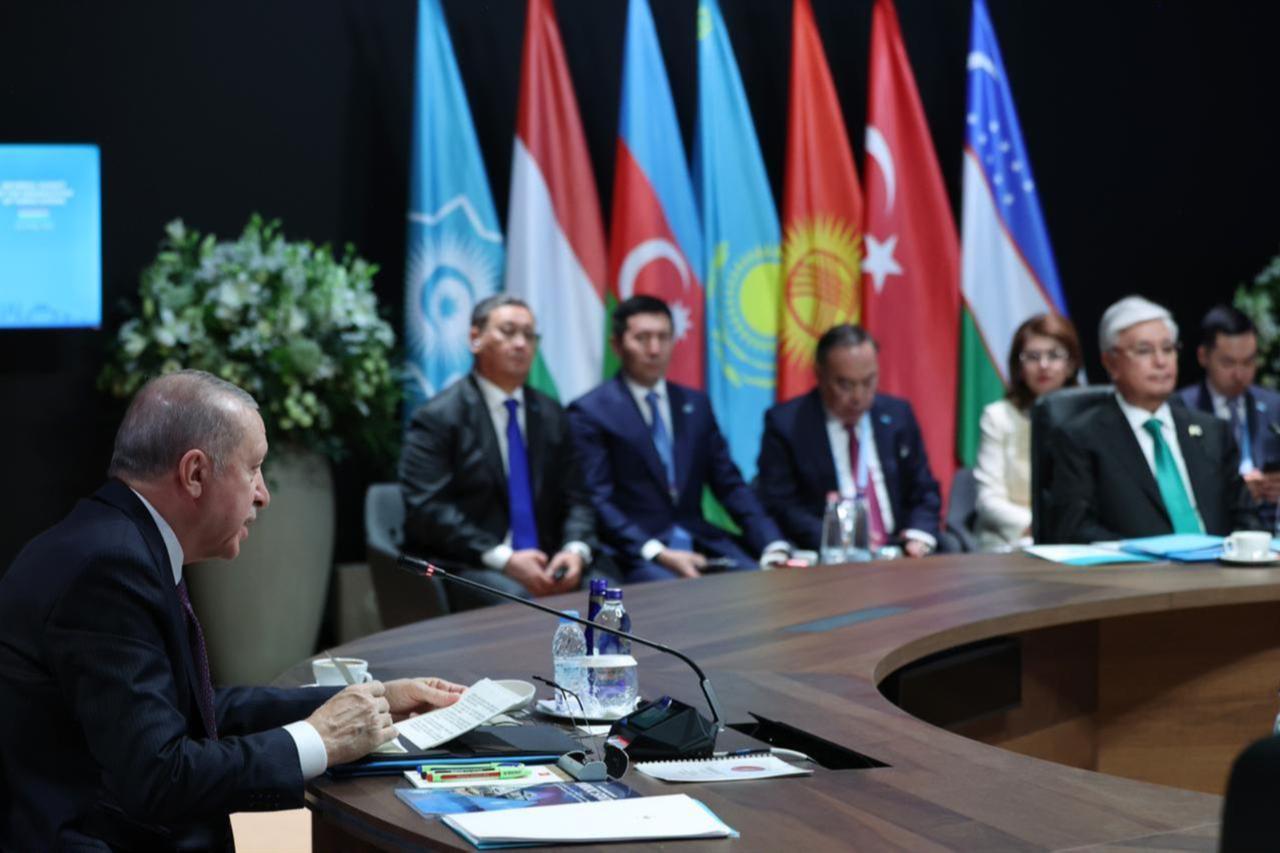
The Organization of Turkic States (OTS) set out with the aim of strengthening economic, cultural and political integration in the Turkic world, but the change in regional security dynamics in recent years imposed a new strategic mission on this organization.
The Eurasian geography reshaped by terrorist threats, cross-border instabilities and great power rivalry necessitates the Turkic states to act together in the field of defense. In this context, discussions on the establishment of a joint military unit within the OTS or the institutionalization of defense cooperation are of critical importance for the future of the organization.
The recent transformation of the OTS foreign policy and security agenda shows that the organization's vision of “deeper integration” is not limited to the economic or transport fields.
In the new geopolitical era that started with Azerbaijan's victory in Karabakh, the Turkic states show the will to be active, rather than passive, actors in the construction of regional security. In this context, the idea of a common military structure goes beyond defense necessity and represents a new security approach that strengthens the strategic identity of the Turkic world, reinforces common interests and supports the search for regional balance.
The institutionalization of joint military cooperation within the OTS is a historical step not only for security but also for regional solidarity, strategic autonomy and defense industry integration. Such an organization aims to bring together the dispersed military potential of the Turkic world under a common security vision, thereby taking a stronger and more coordinated stance in the face of regional instabilities.
The OTS member countries geographically form a wide strategic belt stretching from Central Asia to the Caucasus, from Anatolia to the Caspian Sea. This belt is a region where energy corridors pass, critical transport lines intersect, and various security risks are concentrated. Therefore, ensuring stability in this geography is important not only for the member states but also for the balance of power in Eurasia.
The common military structure will allow for joint response mechanisms against cross-border terrorist threats, illicit arms and drug trafficking, cyberattacks and exogenous security risks. Thus, the security capacity of each member country will be strengthened collectively. Strong Azerbaijan-Türkiye military cooperation needs to be ensured at the organizational level. This could be achieved through joint training programs for member state military personnel, increased interoperability through exercises and the development of co-production capacity in defense technologies, which could put the military resilience of the OTS on an institutional basis.

In this context, the 12th OTS Summit held in Gebele, Azerbaijan, on Oct. 7, was a critical turning point. At the summit, Azerbaijani President Ilham Aliyev put forward the proposal that the OTS member states should hold a joint military exercise in Azerbaijan in 2026. This proposal demonstrated a concrete will to put into practice the military cooperation that has been discussed at the theoretical level for a long time. Beyond symbolic solidarity, the planned exercise is a first step to field-test the potential military integration of the OTS.
The successful conduct of this exercise could lay the groundwork for a possible future “Turkic Force” or “Joint Defense Mechanism”. This process will lead to the development of a defense system in line with the Turkic world's own security needs and regional priorities, and will enable the OTS to move beyond being a cultural association and become one of the pillars of regional security.
Strengthening the OTS military cooperation capacity not only creates a collective defense mechanism but also means a strategic transformation that redefines the position of the Turkic world in the global system.
Located on the transit line between Asia and Europe, the member states have great geopolitical importance in terms of energy corridors, transport routes and natural resources. However, this advantageous position has made the region one of the focal points of great power competition. Therefore, building its own security architecture will enable the OTS to strengthen its geopolitical role and reduce the influence of external actors in the region.
A common military structure would allow the OTS countries to further integrate their foreign policies, make coordinated decisions in times of crisis and develop common defense strategies. This would expand the room for maneuver of the Turkic states, especially in highly competitive regions such as the Caucasus, Central Asia and the Caspian Basin. OTS' military solidarity will both limit the intervention capacity of extra-regional actors and contribute to the Turkic world as an actor that sets its own security agenda.
Moreover, military cooperation paves the way for the independence of Turkic states in the field of defense. Türkiye's capacity developed in recent years in areas such as unmanned aerial vehicles, armored vehicles, electronic warfare systems and missile technologies offers important opportunities for OTS countries in terms of joint production and technology sharing. Joint defense projects will create strategic autonomy in terms of economic and technological cooperation as well as military cooperation.
However, enhancing geopolitical influence goes beyond a show of force to institutional resilience. Therefore, it is important that the military coordination mechanisms to be established within the OTS are supported by institutional structures such as crisis management centers, the Joint Defense Council, or peacekeeping forces. Such an institutional framework will ensure the presence of the Turkic world in the international system not only through cultural ties but also through concrete security mechanisms.
About the author: Zeynep Gizem Ozpinar is a board member and foreign policy specialist at the Turkish Foreign Policy Research Center (TUDPAM).